Indestructible interlopers
Challenges with shifting planting to delicate herbs among thuggish self-sowers
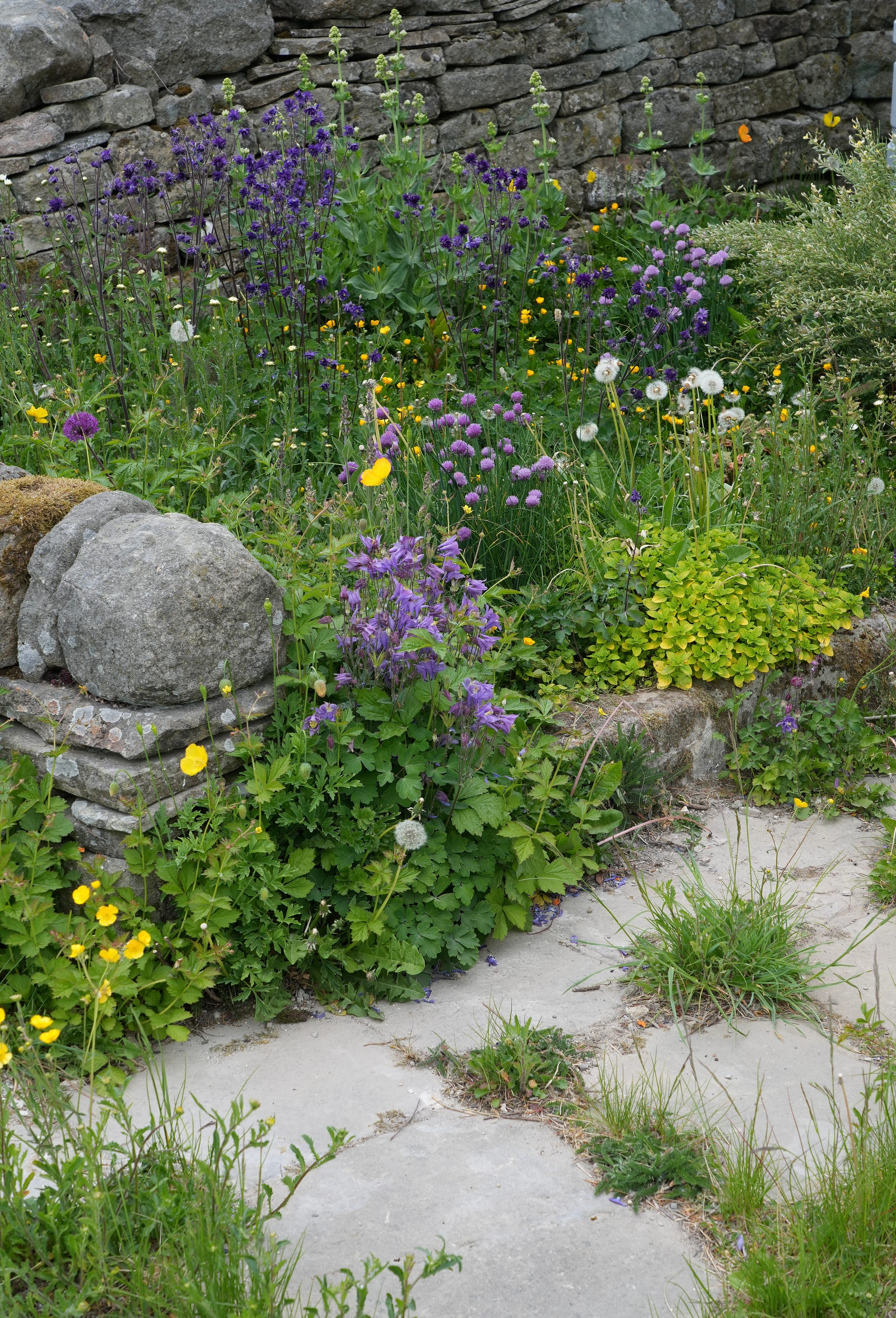
While it’s looking colourful I thought I’d write about the little patches of planting outside our house which I keep trying to make into a herb garden. The plants however have other ideas.
The area consists of five small square beds varying between one metre square with I guess, one larger area 3 metres square (shown above), making it a good example for small spaces. It’s surrounded by dry stone walls, a small patio and the steps and ramp to the house which, as you can see, I’m also treating as planting space... To the upset of everyone except me and the insects.
It’s a mix of what I’ve planted and what came before. Heading into our fifth season, the what came before is generally winning. I like the mishmash.
I haven’t added any compost to these beds, intentionally trying to wear the soil down to favour herbs. Many herbs thrive in poor, free draining soils. I realised long ago, there is no such thing as poor soil where we are, it’s too rich in clay, plant matter and steady ground water. While the beds are quite poor and free draining on top, everything is vigorous here.
Chives grew here already, all I’ve done is split the original clump and dotted more around all of the little beds for some repetition of colour. We do eat and use the chives, whether we need quite as many as I’m growing I don’t know, dividing them was more for the colour. You can see in the foreground of the above photo one of the cuttings I took from an existing sage growing happily.
Aquilegia vulgaris, a mix of three or so unknown cultivars in shades of deep blue to pale blue that were here already. I’ve not been trying to get rid of these, I absolutely love their impact at this time of year, but I have been trying without success to reduce them for more herb space. If you’re looking for a tough plant in areas that aren’t very dry in summer, you can’t go wrong with aquilegia.
Another tough self seeding plant I’ve added is Centranthus ruber ‘Albus’. A white flowered cultivar that self seeds reliably in white, we have no pink or red seedlings at all.
Foeniculum vulgare ‘Purpureum’, herb fennel. I love both the deep bronze and the original green fennel. Unfortunately, the purple cultivar here struggles in summer for one reason or another. It seems to be the one plant affected by lack of water, which is curious because fennel is very drought tolerant - perhaps a sign the soil isn’t very deep for its tap root to grow into. Whereas down on the allotment, we have a hyper vigorous green variety.
I’m planning to swap them out and have some green seedlings growing to plant in our herb beds in the hope they prove stronger. It’s not always true but in general I find purple and variegated plants weaker than their regular green counterparts - to do with a lower ability to photosynthesise. Which is true for most variegated plants, the variegation doesn’t usually contain chlorophyll making it white or yellow, and a reasonably informed guess for purple leaves plants, the colouring affecting photosynthesis somehow. In fact, I guess the evidence is that most plants are green and that must be for a reason.
Myrrhis odorata, the white umbel, I added into a few of the beds, is super lush this spring, growing behind the existing Potentilla fruticosa. I would probably never have planted potentilla, it’s not edible, but I’ve grown to love its biggest asset: non-stop flowering all summer. In front you can see one of our new lavender still establishing, there’s also another sage cutting tucked in that you can’t really see in this photo.
In front, all of the thyme has died, I plan to replace this with plants I’m growing from seed. I’ll have to remove all of the welsh poppies and wild strawberries that have populated this spot to give the thyme a chance.
About to flower in among everything is ox-eye daisy which, like the Aquilegia, loves this spot so much it doesn’t want to give it up, spreading all over. Which is handy because I use the seedlings to move elsewhere around our garden.
I’m determined for the herbs to work here, it’s right outside our kitchen, so I’ve planted a new bay tree - the last one dying in one of our winters. To give it a chance, I grew the new one in a pot for a year to allow the main stem to turn woody and more resistant to cold and wind.
I’ve also planted reliably hardy Salvia ‘Cerro Potosi’ and ‘Nachtvlinder’. With a caution, I have had two ‘Nachtvlinder’ die on me in our exposed location, but this latest one is a cutting from a local plant I know survives in a friend’s garden.
Other herbs that are doing well including Agastache and Angelica. Rosemary grows well too, but its brittle stems can snap in our winter storms. I’m growing ‘Miss Jessop’s Upright’ reported to have stronger stems. Each of these plants are still small in the above photos, I’ll share an update later in they year with their progress.
This is the challenge, once established the shrubs will weather the storms and outgrow the other plants. Due to losses I’ve been replacing the herbs and it feels like we’re stuck where we started. It’s a lesson in gardening to not give up, if a plant doesn’t survive the first time and you know the conditions are right, try at least one more time before changing plans.
I’m sure everyone by now will be screaming at the screen “just weed it you lazy so-and-so” and in my defence, I do thin out some of the excess plants. Especially nettles, hedge woundwort and creeping buttercup, otherwise they really would takeover. Where we live the plants grow faster than my hands though, so my plan is, as with everywhere on the farm and in my designs, to focus on vigour in plant communities to let the plants do all of the work for us.
The hope is that these larger shrubby herbs can outgrow some of the more vigorous plants to shift the balance a little from beautiful to both beautiful and edible.


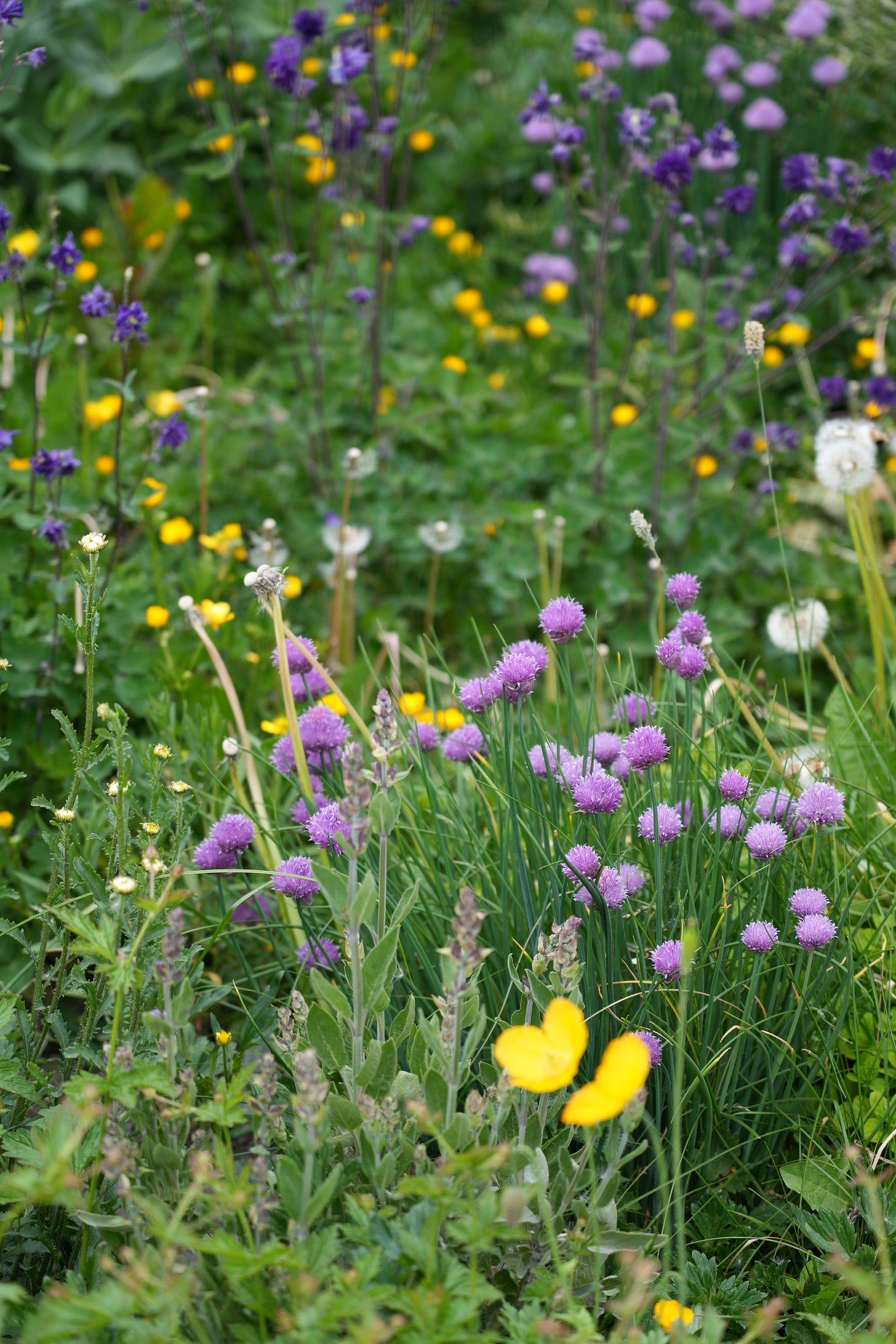
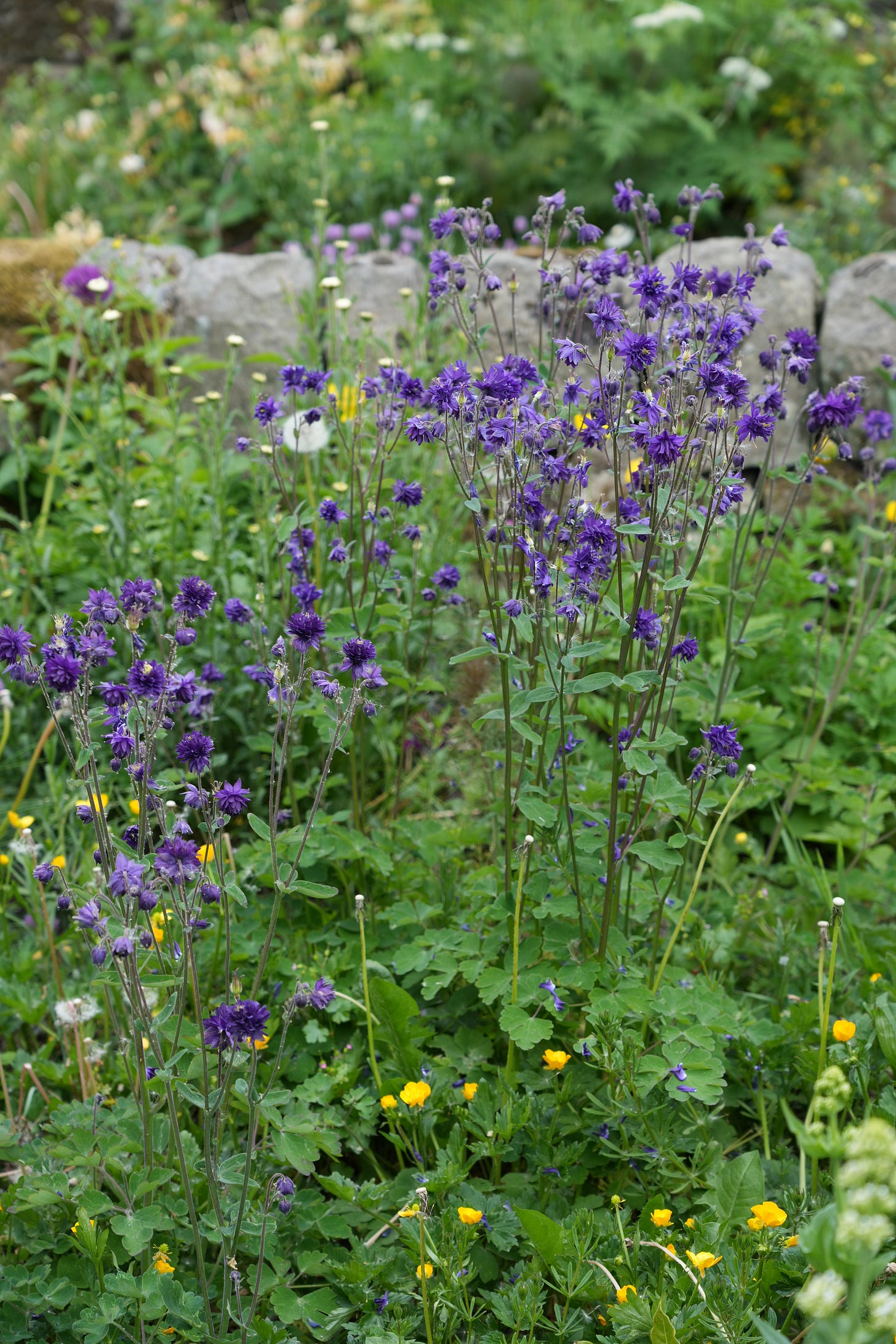
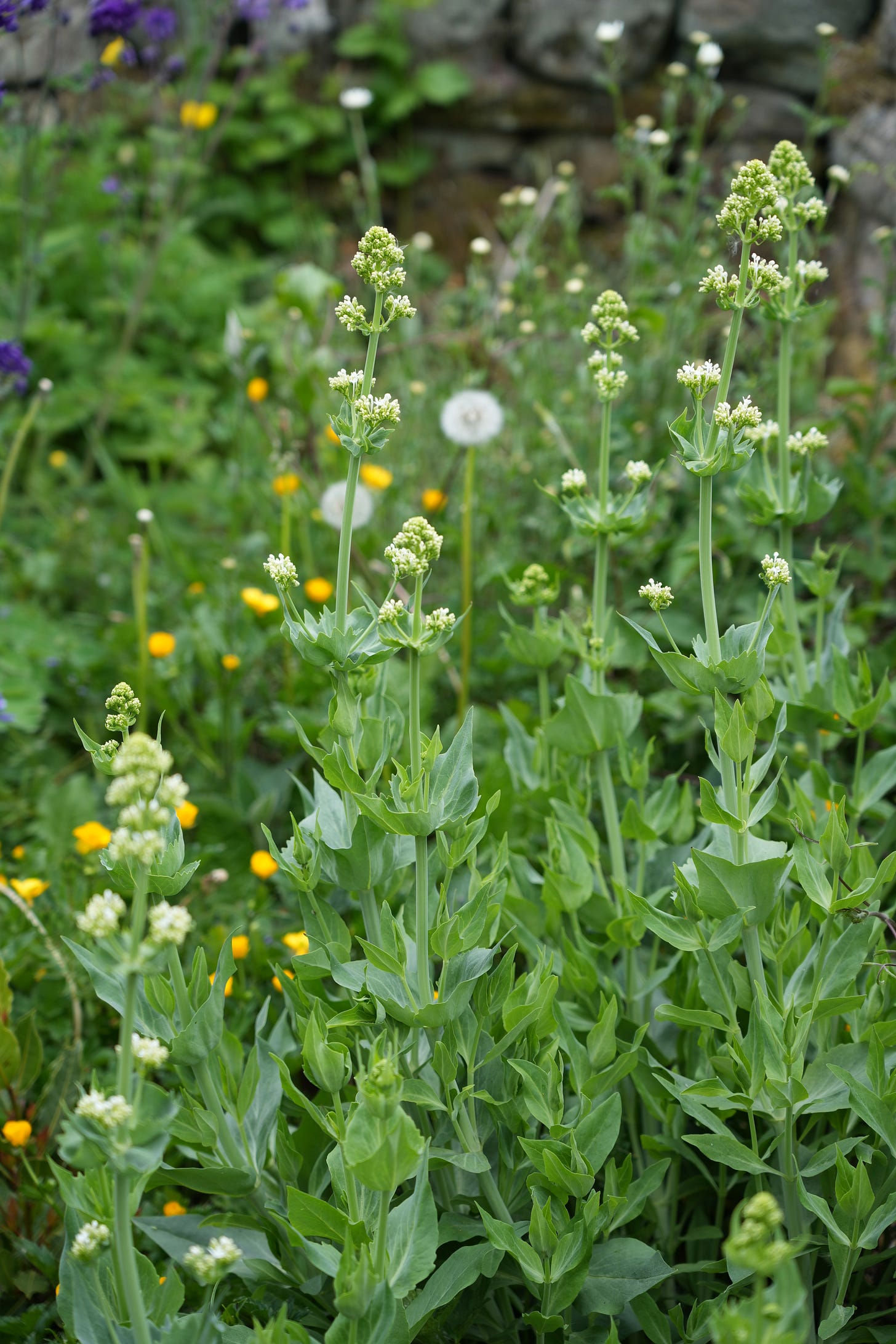

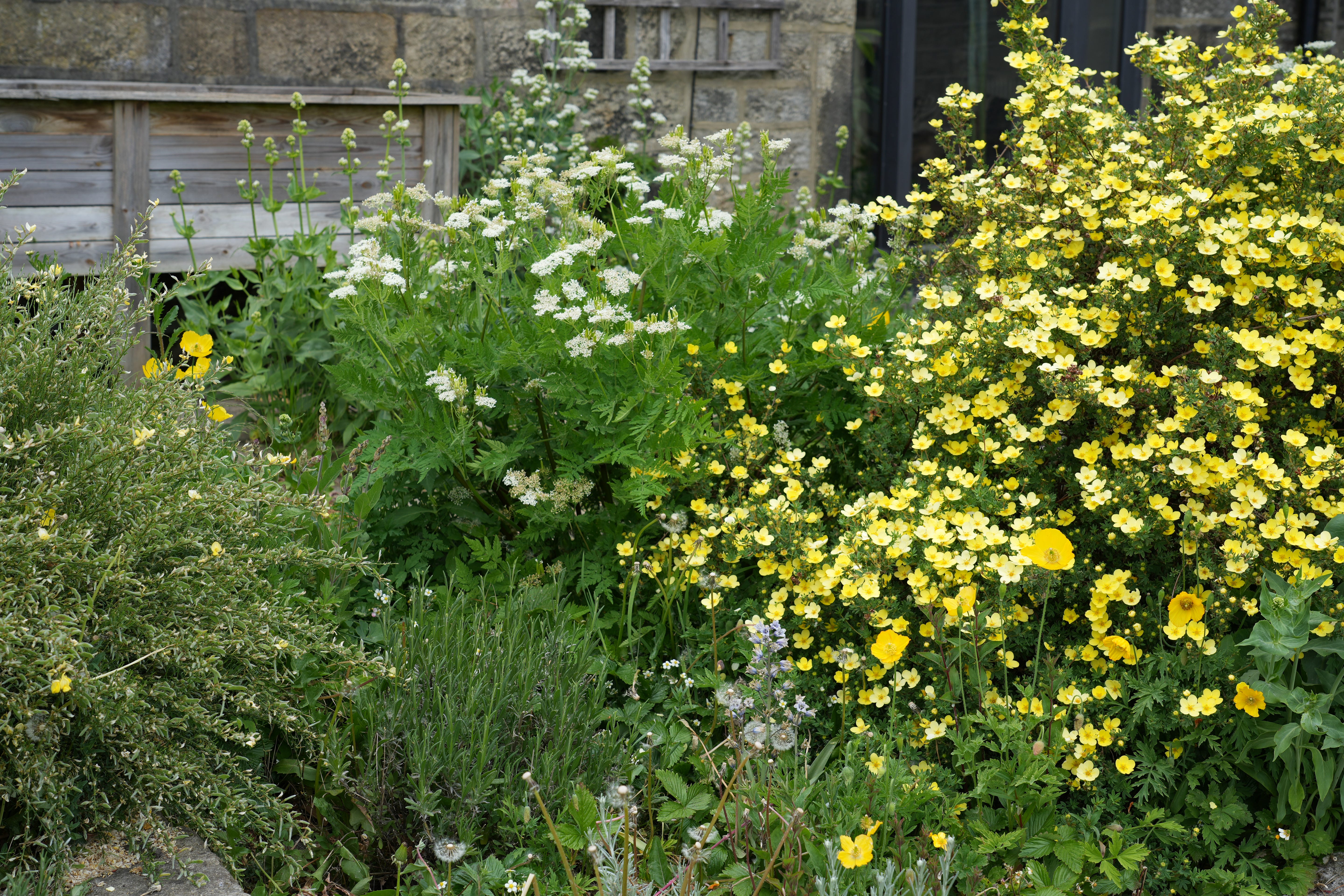


Those photo are great. I'm enlarging them to get a good look at everything. Did you do all the rock scaping yourself?
I loved the mixture of plants as they look much more natural and colourful, as well as attracting insects of course, don’t change a thing.